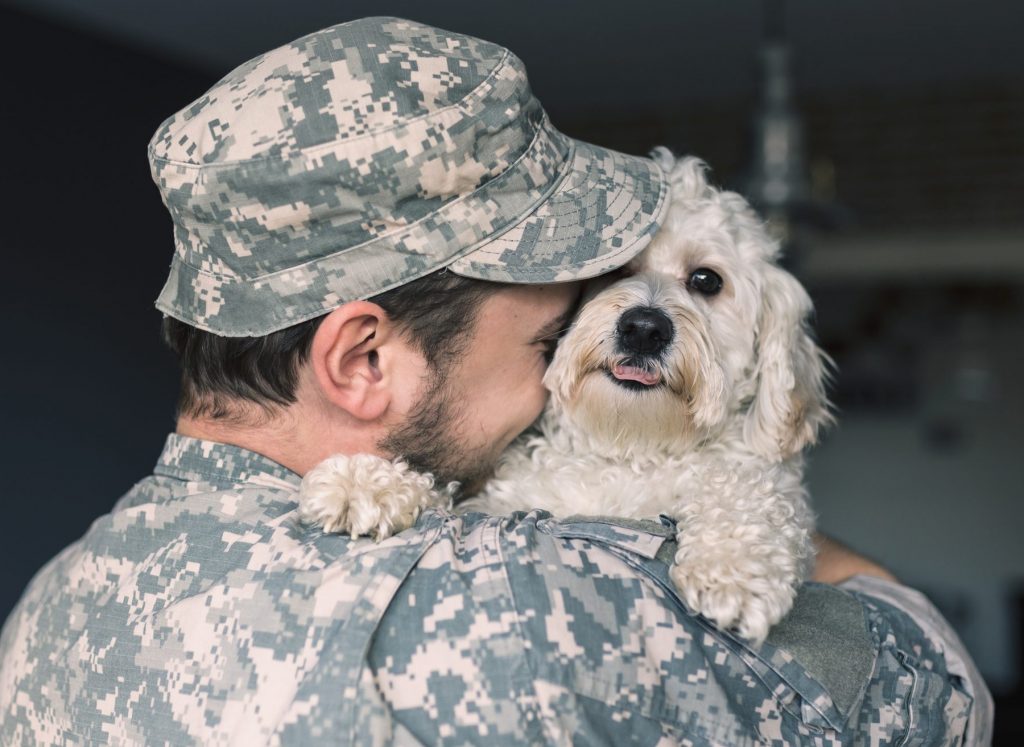Have you always wanted a dog and known you would take great care of one, but felt you couldn’t commit to keeping a pet long-term? Many people try fostering in this scenario, taking care of dogs who are in-between adoption. But this can be an incredibly short-term scenario, from a few days to a few months. If you’re looking for something on a longer timeframe — and something that can have an additional meaningful purpose — being a service dog puppy raiser might be right for you.
What does it mean to foster a service dog puppy?
“Volunteer puppy raisers provide specially-bred puppies a safe home, take them to obedience classes, serve up a healthy diet, provide socialization opportunities and give lots of love,” Canine Companions for Independence (CCI) writes on their volunteer page.
Think of it as a dog fosterer but with an intended outcome beyond adoption. The goal is to nurture and train a dog that can be of service to humans in need. When the time comes, these dogs go on to be service animals for combat veterans and people with particular medical issues like seizures or diabetes, as well as guide dogs for hearing and vision-impaired individuals.
Like dog fostering, you’ll want to make sure you’re a serious dog lover and be ready to address less-than-perfect pet behavior. You’ll likely be asked to attend an orientation training and may receive some materials on how to raise a service dog puppy. Unlike fostering, there’s an expectation that you’ll be actively involved in training the dog so he or she can be a good fit for their future companion.
Most programs require that participants are at least 18 years of age, and most prefer that the puppy raiser has a fenced yard. Some programs also lean heavily toward people who work from home or are able to bring the puppy to work.
“It’s imperative to the puppy’s development that supervision and socialization are provided throughout every day,” CCI states. That’s because, in their working lives, these dogs will be going everywhere with their companions — so they need to be exposed to as many environments as possible while they’re training.
It’s also worth noting that there are requirements for service dog puppies in training that aren’t typical for other dogs. For example, CCI dogs in training aren’t allowed to go to dog parks. You’ll want to be familiar with these nuances before accepting placement of a dog so that you know you can happily take on both the perks and the limitations of how the dog can be handled.
What to expect from training a service puppy
Raising guide dogs and service dogs requires specialized training. The type of training depends on the person’s needs who will be receiving the animal and the organization running the volunteer program.
Most organizations don’t require you to have special skills as a dog trainer in advance. “The best puppy raisers aren’t perfect. They’re the ones who volunteer!” Southeastern Guide Dogs says on its website.
You will likely have to fill out paperwork and do a home visit. From there, you’ll spend time taking the puppy to specialized classes, group outings, and work on socializing the puppy. You’ll likely also be asked to follow trainer guidelines as necessary, and potentially take additional obedience courses with your dog. Some programs have specific requirements for how much time you’ll need to spend with the dog. Hero Dogs, for example, outlines two hours a day of working with a dog, including a one-hour walk, thirty minutes of play and thirty minutes of training.
How much does raising a service dog cost?
Again, it depends on the program. Some will cover the cost of all training, vet care, and even food and supplies. Others may only cover the cost of training as long as they have programs in your area. And, depending on the program’s level of funding, they may require you to fully take financial responsibility for training, food, veterinary care, supplies, and transportation.
How long does it take to raise guide dogs or service dogs?
It varies by program, but typical timelines are around 15-24 months.
Benefits of raising a service puppy
Well, first of all, you’ll have a puppy to love and play with. But more importantly, service dog or guide dog fostering means you’ll get to provide a secure, safe home for a dog that’s going to go on and make a big difference in another person’s life. You get to help that dog be the best service animal they can be. You’ll also learn a lot about effectively training a dog.
Drawbacks of raising a service puppy
Of course, if you love your dog, it can be hard to imagine giving them up when they’re ready to be placed. However, many people who foster say that they’re able to handle letting go of the animals because they know the dog is going to go onto greatly improve their intended person’s life.
One drawback that may not immediately come to mind is the fact that you’ll have a puppy in the house — with all the drama and chaos that entails! Potty training, obedience training, learning not to chew on every last corner of the house — these are all things volunteers have to grapple with, just like anyone else raising a puppy.
Are there other ways to work with service dog puppies?
Yes! For example, Puppy Jake Foundation accepts applications for pet sitters for when the service puppy’s foster family have to attend to business where the dog isn’t allowed. Additionally, if a fosterer can’t attend a scheduled training, Puppy Jake Foundation looks for volunteer “fill-in handlers” to attend trainings with the puppies.
This can be a good option for people who want to work with service puppies but can’t keep pets in their home. Explore volunteer opportunities with your own local service puppy organization.
Is raising or sitting for a service puppy right for you?
If you love puppy breath, have a lot of patience and want to make a difference in the life of a dog as well as the life of a fellow human, it could be the right opportunity for you.
If you’re interested in being involved in a service puppy’s training, consider the time commitments necessary to raise a service dog (up to two years), pet sit (part-time, on-call) or be a fill-in handler (part-time, on-call) and then decide which is the best fit for you.
How to volunteer
Look into local organizations that have service and guide dog puppy raising opportunities. There are also several multi-state organizations like Canine Companions for Independence and Guide Dogs for the Blind, Inc. Take a look at their requirements and read their frequently asked questions before deciding to apply.
Good luck, and may your future be full of well-behaved puppies!







